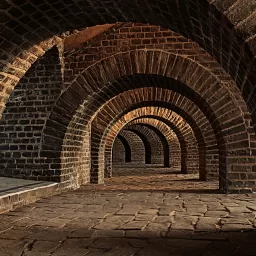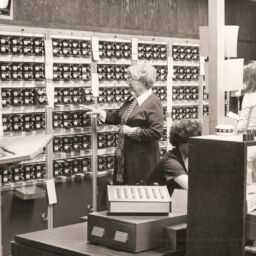For a while, Matchless were the largest motorcycle maker and from the turn of the century, the Collier Brothers were involved in powered two wheelers. Both Harry and Charlie Collier believed in competition, and before World War 1, the marque was well established. The company’s premises were in Plumstead, South East London, and were well removed from the Midlands centre of the industry, but this seemed to have little effect on their prosperity.
In the 1920s, they also built cars. At the start of the 1930s, the company had a range of singles much as any other manufacturer, plus a big V-twin for sidecar work.
For 1930, they also had the new Silver Arrow, which was kept under wraps until the last minute. It was another attempt to provide the touring rider with the fully equipped sophisticated machine.
The Silver Arrow was a side valve v-twin with 54 x 86mm dimensions and 394cc. Its two cylinders were set at 26 degrees within a single casting under a single head. The result looked odd, rather like a single that was too long, and with the exhaust emerging from the manifold at its right corner and the carburettor in the middle of the block on the left.
The gear driven camshaft lay along the machine and was extended to the rear, to drive the mag-dyno. It suggested a shaft drive, but this was an illusion, because chains conveyed the power to the three speed gearbox, and then onto the rear wheel.
Lubrication was dry sump with the oil tank bolted to the front of the crankcase, so there were no external oil pipes. The frame was tubular, with pivoted rear suspension controlled by coil springs and friction dampers mounted under the saddle.
The front had girder forks and both wheels had drum brakes interconnected to a foot pedal on the right, while the front brake could also be operated independently by the handlebar lever.
It was topped off by an instrument panel mounted above the bars, carrying both dials and switches. This was to provide the finishing touch to a machine sold to the discerning as quiet, smooth running and as comfortable as a car.
The problem was that enthusiasts would clamour for advanced developments and sophistication but would never purchase it. Fortunately, Matchless continued with their line of straight forward machines which sold well and kept them solvent.
The singles all had a vertical cylinder with the magneto tucked in behind it and the smallest was a 245cc and comprised the side valve R/4 and OHV R/6. Next came the twin port T/S2 with 348cc, while in the largest class there were three models with the 497cc T/5 having side valves and the 491cc V3 overhead.
There were two versions of the latter, one with twin ports and the other, called the Special had one. The Special was guaranteed to be capable of 85 mph. Finally, there was the 583cc side valve V/6 to complete the singles.
There were two versions of the big v-twin and both used the same 982cc engine with side valves. The basic model was the X/2 and the other X/R2, which had chrome plated rims and nickel plated cylinders.
All models had dry sump lubrication using the rotating and reciprocating plunger set in the crankcase. This system was to last for decades.
The Silver Arrow had been a focus of interest when it was first shown, but it was too small and placid to excite people. Within 12 months, this changed when the company unveiled a machine with a four cylinder overhead camshaft engine at Olympia. It was called the Silver Hawk.
Equally new, and just a few aisles away at the show was the Ariel Square Four, either model would have been a show stopper, but for two machines, with dissimilar engines to appear during a depression was quite remarkable. The Hawk was in essence, two Silver Arrows placed side by side. The dimensions were 50.8 x 73 mm and it had a 592cc capacity but the 26 degree angle remained.
The Hawk had a duplex primary chain with weller spring tensioner, so the four speed, hand change gearbox could run at a fixed centre. Like the twin, it failed to achieve much success for it was expensive at a time when the world was hard up. It also paralleled the Ariel in running into head joint problems if pressed too hard, while the bevels whined or rattled, which was OK on a near racer but not on a deluxe sports model.
In May 1931, a light 500 was added to the range as the D/5, and took its name from its low weight, which just came under the tax barrier. This was an achievement, for the machine was equipped with electric lighting powered by a Maglita unit. The engine was an inclined cylinder, side valve 497cc. Dry sump lubrication was employed and a three speed hand change gearbox was fitted.
1932 saw the introduction of a single port D/6 and twin port D/3, each fitted with a 348cc OHV engine, the 348cc model D, 583cc SV model C, 491cc OHV model C/S and 245cc models R/7 and D/S.
All models had a new fabric oil filter fitted in the oil tank that year and a face cam engine shock absorber. From 1933, the company began its practice of prefixing each model designation with the last two digits of the year, so the D/6 became the 33/D6.
The 1934 range was slimmed down a little, and among the casualties was the Silver Arrow, D, D/5, D/6, D6 and D7. The mudguard beading was changed to a gold line in 1935 and a change to chrome plated wheel rims reflected the move away from the economies of the depression years.
In April 1935, an important new model was announced which was to set the style and format for the range from then on.
The new G3 was known as the Clubman. It had a vertical cylinder and used the trusted 69 x 93 mm dimensions to obtain 348cc. It had an OHV, a magneto tucked behind the engine and a dynamo beneath that, where it was chain driven from the crankshaft.
During the 1930s, Matchless supplied engines to Brough Superior, Calthorpe, Coventry Eagle, OEC and OK Supreme.
1936 saw a radical shake up in the list with only the side valve F7, D5 and X4 remaining. During 1937, Matchless decided to stop supplying machines to the technical press for road tests and this continued for many years. The company also purchased the rights to the Sunbeam motorcycle company, which led to the formation of the AMC group, although the Sunbeam name was sold to BSA in 1943.
AMC continued making motorcycles and racing. However in 1954, they withdrew from racing following the death of Ike Hatch and the fierce competition from other European bikes.
With sales declining during the 1960s, AMC decided to concentrate on the Norton’s twins and the Matchless/AJS singles but they were not successful and the factory ceased production and AMC became part of the Norton-Villiers company in 1966.



